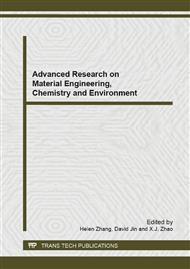p.471
p.476
p.480
p.486
p.493
p.498
p.502
p.508
p.511
Study on the Measure of Reducing Noise and Vibration of Over-Track Buildings Induced by Crane Load
Abstract:
Big vibration will be cause by train load and crane load in the over-track buildings, and then generate structure-borne moise in the buildings, which will affect the live quality of the people lived in the buildings greatly. Focusing on this proble, three finite element method is established based on a practical engineering. The measures of reducing noise and vibration is proposed according the characteristics of the building, which is to replace the steel column as concrete column. The dynamic responses of the building under the two cases are calculated and analyzed. The computation results show that the measurement can reduced structure vibration significantly, and accordingly, the structure-borne noise is also reduced greatly. The research results in the paper have strong engineering practicability and can provide some references for some other projections in China in future.
Info:
Periodical:
Pages:
493-497
Citation:
Online since:
September 2013
Authors:
Keywords:
Price:
Сopyright:
© 2013 Trans Tech Publications Ltd. All Rights Reserved
Share:
Citation:


